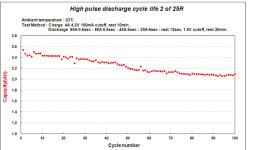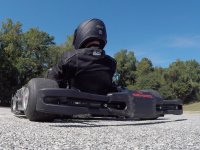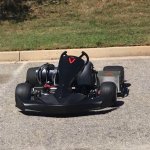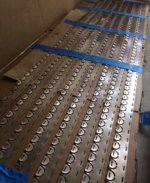garolittle
10 kW
The spec sheet for the INR Samsung 25R cell (rated at 20A continuous) shows a "Maximum Momentary Pulse" of 100A. This may be a dumb question but would 100A be the "moment of death" for this cell? In other words, would hitting 100A kill the cell completely? Just curious. In practice I would never exceed 20A per cell (probably not even 15A per cell). That seems like a crazy high current level. Thanks for any comments. Gary






